Author: michellevargo
Trace Memories: Reading Response
Denise Birkhofer toggles between universal themes of violence and specific individual experiences in his discussion artist Doris Salcedo. Doris Salcedo responds directly to the violence in her native Colombian culture. Birkhofer suggest Salcedo uses clothing and objects to represent individuals. Furniture stands in as a narrative while clothing acquired from victims’ families provide an intimate experience.
Trace Memories discusses four examples of Salcedo’s work optimizing the metaphor between objects and people. In Untitled, new white shirts represent 40 banana plantation workers after their horrific massacre. Organization of the generic materials suggests the universal activity of counting death tolls. Atrabiliarios buried shoes donated by individual families and from hospitals in Bogototá under a thin bladder membrane. The membrane separates the view from the victim creating the unclarity of memory. In later versions of La Casa Viuda, Salcedo mends furniture with human remains, such as bone and skin. Although inspired by specific events that the artist feels a responsibility to publicly mourn, Salcedo creates a universal understanding of victimization.
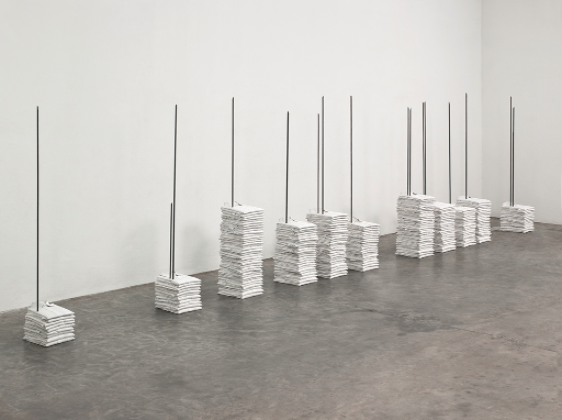
Untitled 1989-1993

Atrabiliarios 1989-1991
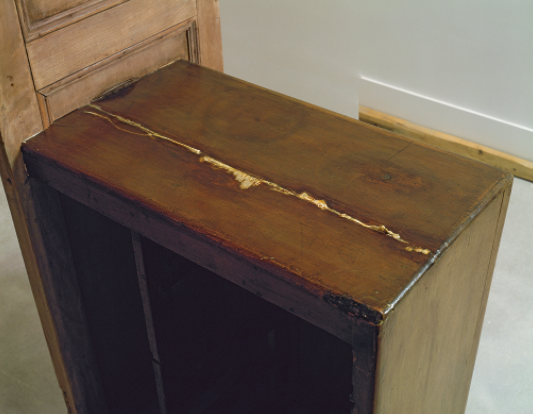
La Casa Viuda II 1992-1994
The CELL: A Response
The Counterterrorism Education Learning Lab (The CELL) defines terrorism as the “premeditated use of violence targeting civilians or their property for political, religious, or ideological gain. It is a tactic to create an environment of fear, chaos, and intimidation in order to further terrorist objectives.” This quote comes directly from the entry wall of the CELL museum, where patrons immediately encounter a large piece of rusted shrapnel from the 9/11 World Trade Center attack, subtly linking to the American heartstring. This definition of terrorism, however, is the museum’s. The museum representative explained, ‘there is no agreed upon or singular definition for terrorism’. The CELL seeks to provide an inclusive understanding of terrorism through graphic videos, real artifacts, and interactive learning opportunities, but leaves a heavy aftertaste of nationalism undertones.
An Unlikely War Artist
Many children grew up learning to read with Dr. Seuss. National Read Across America Day (March 2) celebrates Dr. Seuss’s Birthday and his literary impact. Surprisingly, many have never heard about his political contributions or secret art works. Also known as Theodor Seuss Geisel, Dr. Suess created more than 4o0 political cartoons published in a New York tabloid called PM. These cartoons range from Japanese internment camps to environmental issues, ‘promoting tolerance, resistance, and awareness’. In many of the cartoons Geisel places ‘America First’ slogans. This has also become the slogan of Trumps foreign policy, protecting America first, which has recently caused an explosion of protests.
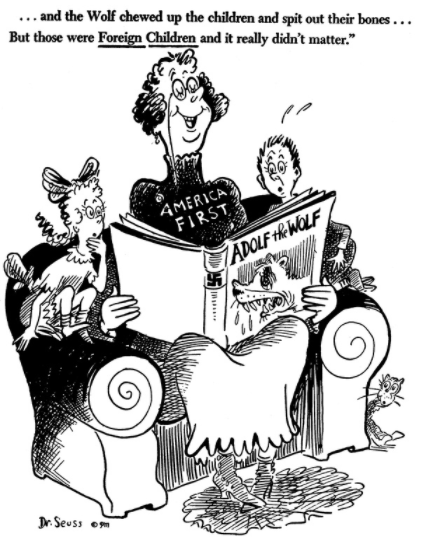
Dr. Seuss, … and the wolf chewed up the children and spit out their bones… but those were foreign children and it really didn’t matter., October 1, 1941
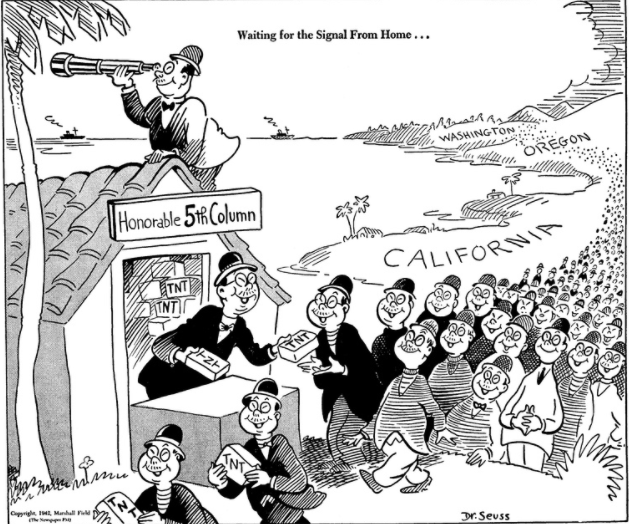
Dr. Seuss, Waiting for the signal from home…, February 13, 1942
Now tabloids are thought of as a source for celebrity gossip but what about looking at secondary new sources. The onion for instance could be considered a modern place where Seuss’s cartoons might be published. Molly Gottschalk’s article and our recent work with war photograph raises interesting questions about secondary new sources and their legitimacy, as well as using war artist to tell an accurate portal of the current political climate.
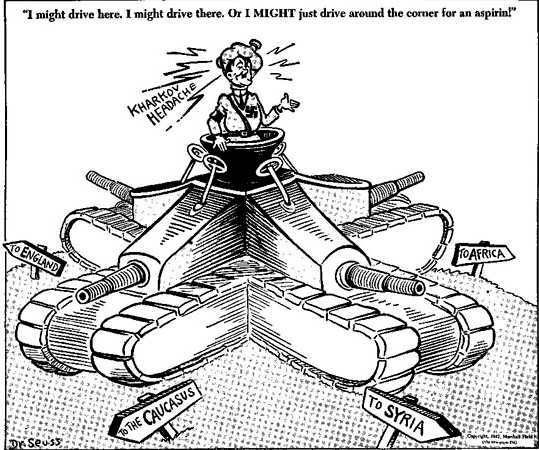
Dr. Suess, I might drive here. I might drive there. Or I MIGHT just drive around the corner for an asprin!, May 22, 1942
An-My Lê: 29 Palms and the Beauty of War
An-My Lê fled Vietnam with her family as a teenager in 1975, settling in the United States as a political refugee. Although she lived directly through a war and produces war photography, An-My Lê challenges conventional war relationships. Instead of using anti-war propaganda, grotesque imagery, or a ‘shock factor’ in her work, An-My Lê steps back and widens the scope of war imagery in order to find beauty in war.
In 2003 An-My Lê’s petitioned to be an embedded photographer in Iraq was denied. She explains in an interview with Art21 how she came to photograph scenes at 29 Palms in California. It is here were she documented soldiers preparation for war and their relationship with the surrounding environment. Karen Irvine, curator at Museum of Contemporary Photography (MoCP) where 29 Palms showed in 2007, states that stepping back an having a relationship with war in this manner further challenges the concepts of photojournalism and the authenticity of war photography. However in an interview with Art21, An-My Lê does not discuss the concept of photojournalism in her work, but rather her fascination with war and its relationship to the land.
Most of the work in the series uses faded tones to artful blend soldier and landscape. This wash allows for the melding of man and the environment. An-My Lê is fascinated with the idea and construction of war, mobilizing men and machine, and strategy. Looking through this lens she removes partisan view points and looks at war as a whole. Instead of seeking out the horrors of war An-My Lê looks for the beauty.
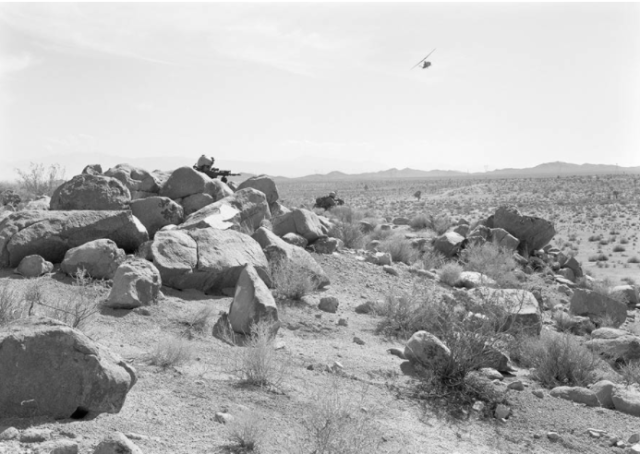
Zoriah Miller
Zoriah Miller ignited a censorship debate in the New York Times titled ‘4,000 U.S. Deaths and a Handful of Images.’ The article follows Zoriah’s story and coverage of a suicide bombing killing US soldiers during a city council meeting in Iraq. After posting the photographs on his website, Zoriah was contacted by the Marine Corps, demanding the photos removal. Although Zoriah followed embedding guidelines, his time in the military in Iraq was terminated. In the Times article Mr. Miller said. “I took pictures of something they didn’t like, and they removed me. Deciding what I can and cannot document, I don’t see a clearer definition of censorship.”
On his website Zoriah talks about censorship as one of his main motivations to being a photojournalist. He believes the news prints stories that sell not necessarily stories that need to be told. “Some how it has become ok to show violence for the sake of entertainment but not for the sake of news and education” Miller says. Censorship fuels his desire to remain a freelance photojournalist
Originally involved in disaster management and humanitarian aid to developing countries, Zoriah became a photojournalist to document disasters and humanitarian crisis. He believes he can use the power of emotion of the still image to educate the people about suffering in the developing world. He remarks war photography as a natural progression.
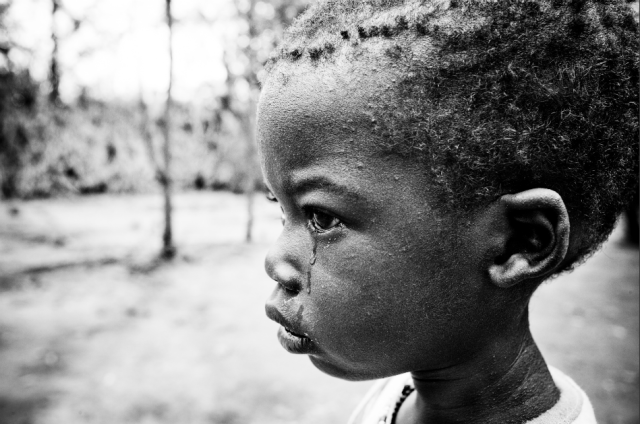
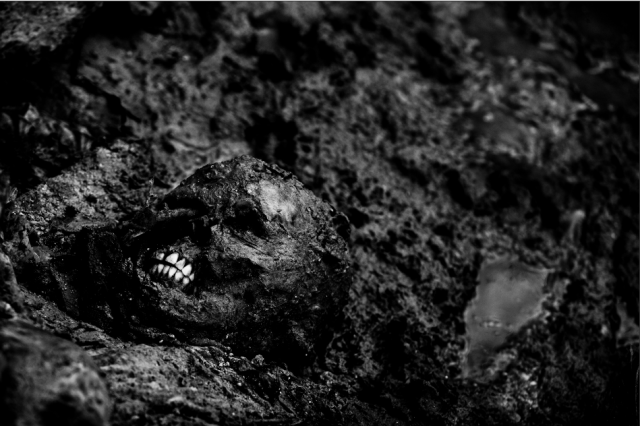

June 26, 2008 Marines who were killed in a suicide bomb attack during a city council meeting in Garma, Iraq, in Anbar Province. New York Times
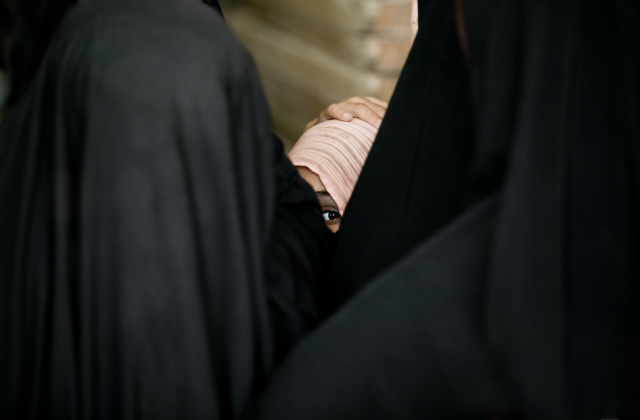
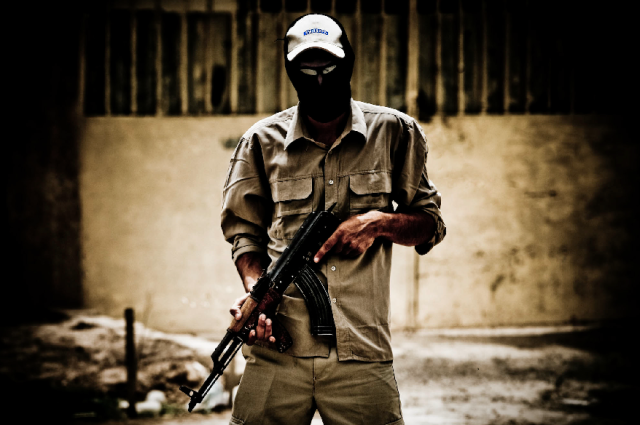
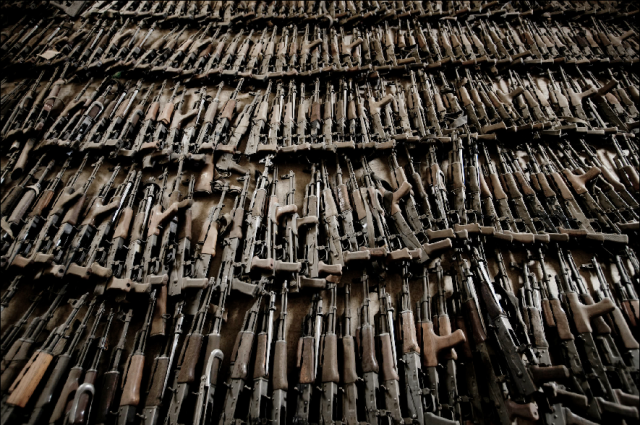
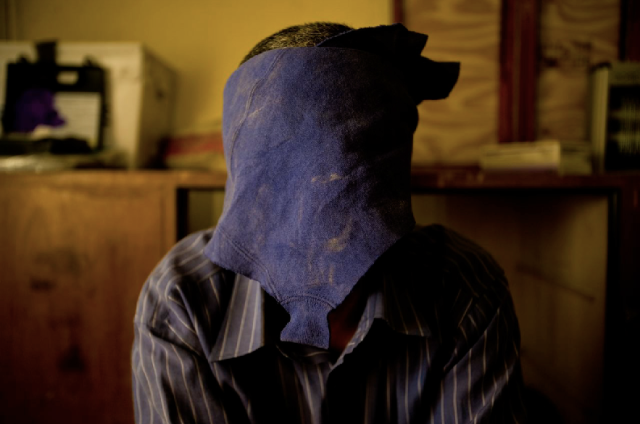
Sources:
http://www.zoriah.com/interviews.html
Zoriah’s Main Website and Portfolio
A Personal Response to chapter 8 of Susan Sontag’s Regarding the Pain of Others
War and peace are psychological states. One can not exist without the other, just as we would not know happiness in the absence of sadness. In the words of George Orwell “war is peace.” Humans like to compartmentalize things and for that sake, with the use of definement by historical timeline, in the last century the world has seen only 11 years of peace among all humans. And at its longest stretch that world wide peace lasted only four short years. At twenty-three years of age my country has been at war for fifteen of them, making the War in Afghanistan the longest war in United States history.
Chapter eight of Susan Sontag’s Regarding the Pain of Others offers no solution to ending war. She does, however, order the reader to educate themselves via the existing ‘vast repository’ of photographic documentation of the atrocities of war. As conscious adults it is no longer our right “to this kind of innocence, of superficiality, to this degree of ignorance, or amnesia” (p. 114) regarding the cruelties of which humans are capable.
Continue reading “A Personal Response to chapter 8 of Susan Sontag’s Regarding the Pain of Others”
Susan Sontag Chapter Two: A history of war photography and discussions of validity
In chapter two of Regarding the Pain of Others, Susan Sontag chronologically organizes the progression of war photography and argues that viewers project meaning onto photo based on memory, while photographers are unbiased and fair-minded witnesses.
The Spanish War (1936-39) was the first to be “witnessed” in the modern sense. Sontag quotes Robert Capa’s, Fallen Soldier (Fig. 1), as a standard image of war, defined by its exaggeration and impact (memory). War imagery does exaggerate to the ignorant viewer because it only shows the aftermath. This shock became a normal part of the culture, know as photographic enterprise. “Part of the normality of a culture in which shock has become a leading stimulus of consumption” (P. 20). Photographs replaced the indescribable with authority greater than any verbal account. Between 1929-38 picture stories featured in magazines further sensationalized the photographer as a unbiased hero.
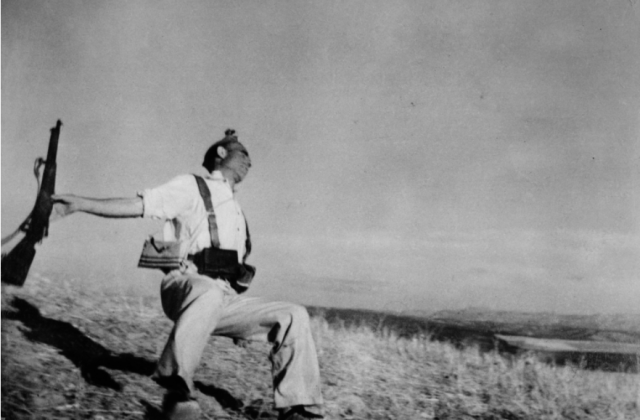
(Fig. 1 Robert Capa, The Falling Soldier, September 5, 1936)
